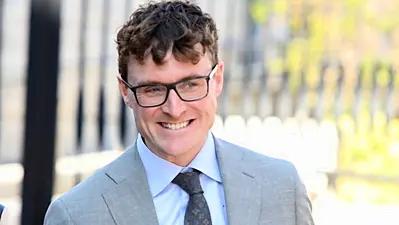
A High Court judge has warned all sides in a bitter row between three co-founders of technology conference organiser Web Summit to resolve the dispute before evidence begins.
At the start of the trial’s second week, Judge Michael Twomey quoted the French philosopher Voltaire, warning all three businessmen that the trial could take years they would never get back.
On Tuesday, before Web Summit co-founder Dare Hickey was due to give evidence in his lawsuit against major shareholder Paddy Cosgrave, Judge Twomey urged the parties to work on resolving the dispute “every day” and praised them for trying to reach an agreement before the case went to trial.
The judge advised all three not to dwell on the “right and wrong” aspects of their business disagreement and to focus on reaching a resolution.
Judge Tuomi noted that mediation was “a thousand times preferable to litigation.”
He also quoted Voltaire as saying: “I have never been ruined, but twice – once when I lost a lawsuit and once when I won it.”
Judge Tuomi warned that the three-month time limit for the case could mean he would reach a decision in the winter and that all three parties might be unhappy with the decision.
He said this could lead to appeals that could eventually reach the Supreme Court, where a final decision could take up to three years.
The judge stressed that the trial would entail personal costs and that if the case went to trial they would “not, never get back” three months of their lives, and that all parties involved would suffer “real and human” losses.
The judge then called a recess to allow the parties to discuss his comments.
Evidence in five separate claims brought by Mr Cosgrave, Mr Hickey and David Kelly was due to begin in the High Court on Tuesday morning. The hearings, which began last week, were due to run for nine weeks.

Ireland Litigation brought by minority shareholder of Web Summit… Read more
Mr Cosgrave is suing Mr Kelly, who owns 12 per cent of Web Summit, for alleged breaches of his fiduciary duties as a director of the company. Mr Cosgrave, the majority shareholder, is in turn being sued by Mr Kelly and Mr Hickey, who owns 7 per cent of Web Summit, for alleged shareholder oppression and breach of a profit-sharing agreement.
Last week, as lawyers for all sides made opening statements, Bernard Dunleavy, Mr. Cosgrave’s lead lawyer, said the lawsuit filed by Mr. Kelly and Mr. Hickey was an attempt to avoid reducing the value of a potential sale of their shares in the company, which holds
Sourse: breakingnews.ie